Hampyeong Cheonji Hanu Plaza (함평천지한우프라자)
11.4 Km 19227 2019-12-23
42, Seobu-gil, Hampyeong-eup, Hampyeong-gun, Jeollanam-do
+82-61-323-3366
Run by the Hampyeong National Livestock Cooperative Federation, Hampyeong Cheonji Hanu Plaza offers visitors a taste of Hanu (Korean beef) that is produced in Cheonji, Hampyeong.
It is located in front of the Hampyeong Expo Park, the venue of the Hampyeong Butterfly Festival and the Hampyeong Grand Chrysanthemum Festival. It consists of large seminar rooms to accommodate workshops, family parties, etc.
3917 Majung [Korea Quality] / 3917 마중 [한국관광 품질인증/Korea Quality]
11.5 Km 30 2023-04-13
42-16, Hyanggyo-gil, Naju-si, Jeollanam-do
Located in Gyo-dong, Naju-si, Jeollanam-do, 3917 Majung is a cultural space combining a hanok (traditional Korean house) cafe, modern cultural experiences, and hanok guesthouse. The name “3917 Majung” refers to its goal of “welcoming (majung) the modern culture of Naju in 1939 anew in the year 2017.” Spread out on a wide land area of 13,223 m2 are four buildings of Nanpajeong, Sarangchae, Mokseowon, and Siseoheon. All buildings take after the unique combination of Japanese- and Western-style housing commonly seen in the late Korean Empire period.
Nanpajeong is a pavilion constructed during mid-Joseon period, named after its most famous guest Jeong Seok-jin (pen-name: Nanpa), a scholar who led an uprising against Japanese imperialism in late Joseon period. There are two ondol (under-the-floor heating system) rooms in total, separated by a central wooden-floor hall (daecheong), one supporting 3 to 4 guests, one ideal for 2 to 3 guests. The restroom, which is also fitted with a shower booth, is located outside the building.
Eunhaengmok Room 1 and 2, which are housed in the Sarangchae building, are tatami rooms with balcony. Sarangchae’s shower and restroom is located in the building. Mokseowon is likewise made up of three tatami rooms, separated by open floor space and an attic. The shower and restroom is located outside the building. Siseoheon houses a 4-person room and the largest room in the complex, capable of supporting more than 10 guests. There are 2 restrooms and 2 restrooms with shower facilities, making the building ideal for group events.
나주목사내아
11.8 Km 27266 2021-02-24
Jeollanam-do Naju-si Geumseonggwan-gil 13-10
+82-61-332-6565
나주목사내아는 조선시대 나주목사의 관저로서 상류주택의 안채와 같은 평면 구조로 이루어져 있으며 안채는 순조 25년(1825년) 건립된 것으로 건물 구조는 전통 양식인 한옥 ㄷ자형이다. 나주목사내아는 현재 전남 문화재자료 제 132호로 지정되어 있다. 나주는 조선시대 관아건물이 많이 남아있어 문화유적 답사지로서 적합하다.
* 규모 - 내아 1동, 행랑채 1동
Pavillon Geumseonggwan à Naju (나주 금성관)
11.9 Km 30633 2023-03-24
8, Geumseonggwan-gil, Naju-si, Jeollanam-do
+82-61-339-8611
Le pavillon Naju Geumseonggwan servait de guesthouse pour les diplomates et politiques durant la dynastie Joseon. Le bâtiment a été construit entre 1475 et 1479. La structure a été reconstruite sous l'occupation japonaise avant d'être restorée dans son état initial en 1977.
Habitat de lotus blancs Hoesan de Muan (무안회산백련지)
14.7 Km 24326 2021-02-16
Bogyong-ri, Illo-eup, Muan-gun, Jeonnam
+82-61-283-1325
L'habitat des lotus blancs Hoesan de Muan, appelé 'Baengnyeonji' en coréen, est le plus grand habitat consacré aux lotus blancs en Asie. Les lotus resplendissent entre juillet septembre. Un festival est organisé sur place en août.
Musée de la Poire de Naju (나주배박물관)
16.0 Km 7221 2021-03-29
5838, Yeongsan-ro, Naju-si, Jeollanam-do
+82-61-339-2590
Le musée de la poire à Naju dans la province du Jeollnam-do a ouvert ses portes en 1992 pour étudier et promouvoir la célèbre poire de Naju.
Connue comme étant le lieu d’origine des poires coréennes, Naju possède même un musée dédié à ce fruit. Le musée de la poire de Naju propose tout ce que vous aurez besoin de savoir à propos des poires, comme par exemple l’histoire des différentes variétés, les méthodes de conservation et le processus de culture. Les visiteurs peuvent également acheter des poires dans le centre de distribution des poires adjacent au musée.
Maru-o [Korea Quality] / 마루 O(MARU-O) [한국관광 품질인증]
17.1 Km 212 2020-12-12
5-8, Baemet 3-gil, Naju-si, Jeollanam-do
+82-61-331-0700
MARU O is a modern business hotel located at the center of Naju Innovation City. Many public enterprises are clustered around the hotel. Therefore, the hotel is loved by business travelers visiting the city, while the neat facilities also attract casual travelers. The Bitgaram Lake Park, right in front of the hotel, is a great place for a walk along the pleasant park surrounding a small lake. At the heart of the park stands Baemesan Observatory where one can enjoy an unhindered view of Naju Innovation City.
The hotel offers a variety of services as well. In particular, there is a charger for electric car drivers in the underground parking lot. Front desk provides tourist guidebooks on Naju and the Jeollanam-do region and lends mobile phone charger for free.
MARU O is about a 12-minute drive away from the KTX Naju Station, and 15 minutes by car from the inter-city bus terminal, Yeongsanpo Hongeo Street or Naju Gomtang Street. In particular, Naju Gomtang Street is a region where famous Gomtang (Naju’s representative food) restaurants are concentrated. As Hayanjib, Naju Gomtang Noamjib, Naju Gomtang Wonjojib and 60-year Nampyeong Halmaejib (some of the best known places) are all found here, just drop in anywhere and you will be able to taste the authentic taste of local dishes.
Hampyeong Haesujjim (Bain d’eau de mer Hampyeong) (함평해수찜)
18.0 Km 10704 2019-11-26
Sinheung Village, Gungsan-ri, Sonbul-myeon, Hampyeong-gun, Jeollanam-do
+82-61-322-9900
«Haesujjim» de Hampyeong est une méthode de traitement médical qui a été largement utilisé depuis les années 1800. Les éléments nutritifs sont ajoutés à l'eau de mer, qui est ensuite chauffée pour la baignade, la création d'un «bain d'eau de mer Haesujjim ()" qui combine les avantages des sources d'eau chaude et le bain. Cela est particulièrement populaire chez les femmes au foyer car il est avéré être un traitement efficace contre les névralgies, l'inconfort post accouchement, l'arthrite, et la dermatite.
Plage de Dolmeori (돌머리해변)
18.3 Km 28724 2021-10-28
614, Jupo-ro, Hampyeong-gun, Jeollanam-do
+82-61-322-0011
Cette plage est située à l’extremité ouest de Hampyeong-eup et le bout de la zone est rocheuse. Elle se nomme « Dolmeori », qui signifie « Tête de pierre ».
Juste à l’arrière-pays de la plage se trouve une forêt dense de pins d’une douce odeur et une eau fraîche suffisament peu profonde pour s’y baigner. Bien que la différence au niveau du paysage entre la marée basse et la marée haute soit considérable, des efforts ont été fournis pour compenser les défauts. Une piscine a été installée sur une zone de 8910m², pour pouvoir se baigner même à marée basse. Aussi, des installations variées sont disponibles pour le confort des utilisateurs. Un long pont en bois a été érigé pour la vue des vasières et des créatures de mer pendant les marées basses. Sur les vasières, il y a toute l’agitation de la vie maritime et les cabanons sur-élevés près de la plage vendent des fruits estivaux frais.
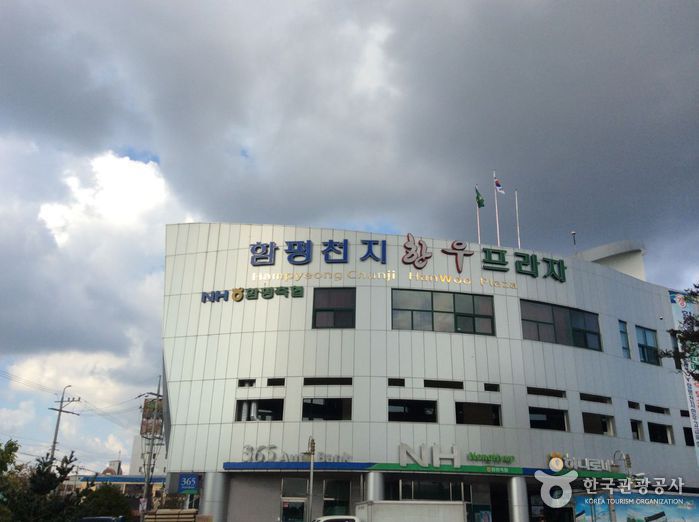
![3917 Majung [Korea Quality] / 3917 마중 [한국관광 품질인증/Korea Quality]](http://tong.visitkorea.or.kr/cms/resource/24/2706124_image2_1.jpg)
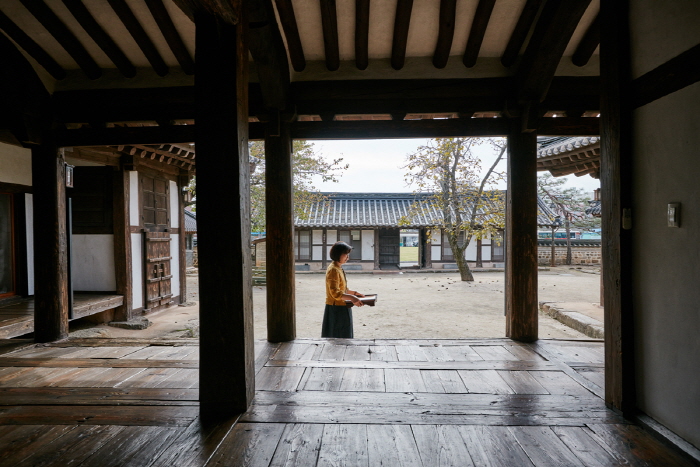
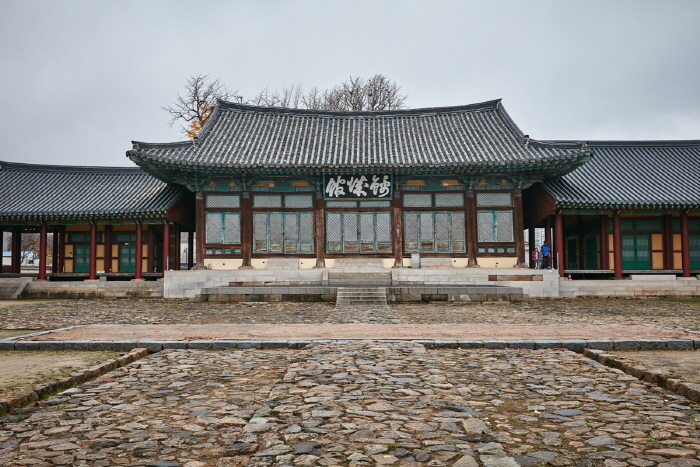

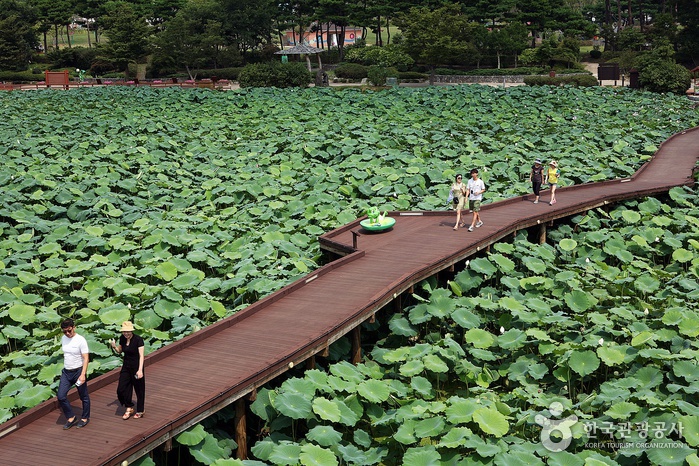
![Maru-o [Korea Quality] / 마루 O(MARU-O) [한국관광 품질인증]](http://tong.visitkorea.or.kr/cms/resource/14/2593514_image2_1.jpg)
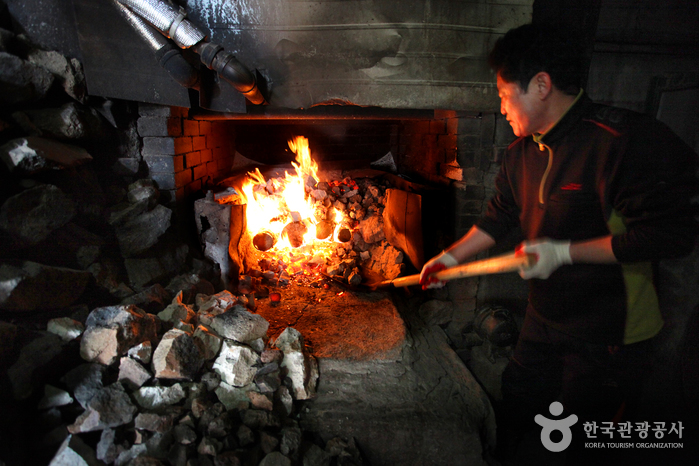
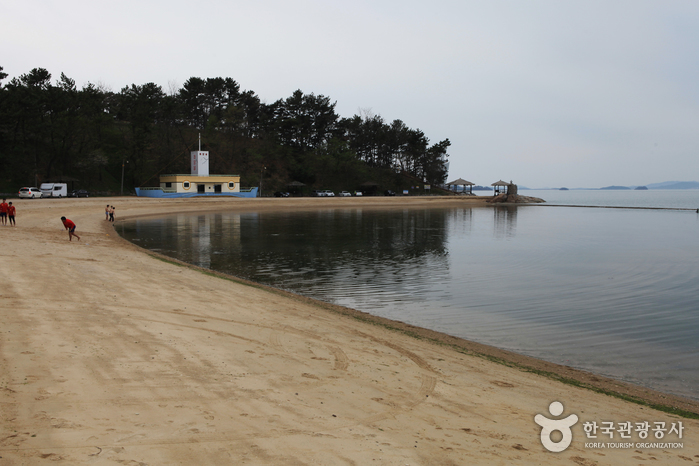
 Français
Français
 한국어
한국어 English
English 日本語
日本語 中文(简体)
中文(简体) Deutsch
Deutsch Español
Español Русский
Русский